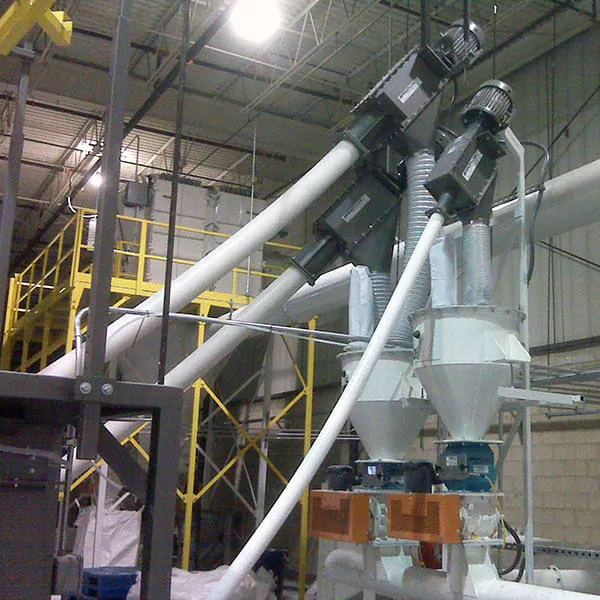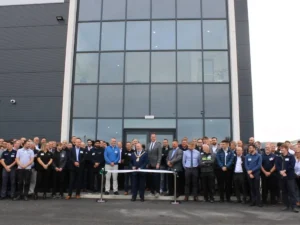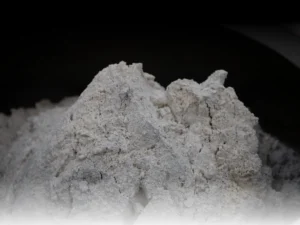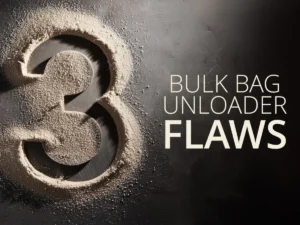When it comes to optimizing material handling processes in various industries, flexible screw conveyors have emerged as a versatile and efficient solution. These systems offer a cost-effective means of transporting bulk materials, but determining flexible screw conveyor cost can be a multifaceted task. In this guide, we will delve into the factors that influence the pricing and help businesses make informed decisions regarding their investment in this indispensable equipment.
How Much Does a Flexible Screw Conveyor Cost?
The cost of these conveyor solutions depends on several application-specific factors. You can expect the cost of a good quality flexible screw conveyor from respected belt conveyor manufacturers to range from $4,000 (£1,800) at the low end and up to $20,000 (£18,000) at the high end. However, when comparing mechanical conveyors, a flexible screw conveyor is the most economical option out there.
What Are the Maintenance Costs?
These conveyor technologies are low maintenance because they only have one moving part, the inner spiral. When installed correctly, these conveyors are reliable and hassle-free.
Consider getting the spirals that are heat-treated and tempered for maximum working life. It’s also recommended that processors keep a spare spiral on hand. If, by chance, your material changes or you incur any unexpected issue, keeping a spare spiral on hand will minimize downtime.
Investing in high-quality components like conveyor belts and following a proactive maintenance schedule can help control expenses and extend the conveyor’s lifespan, ensuring that it continues to operate reliably and efficiently.
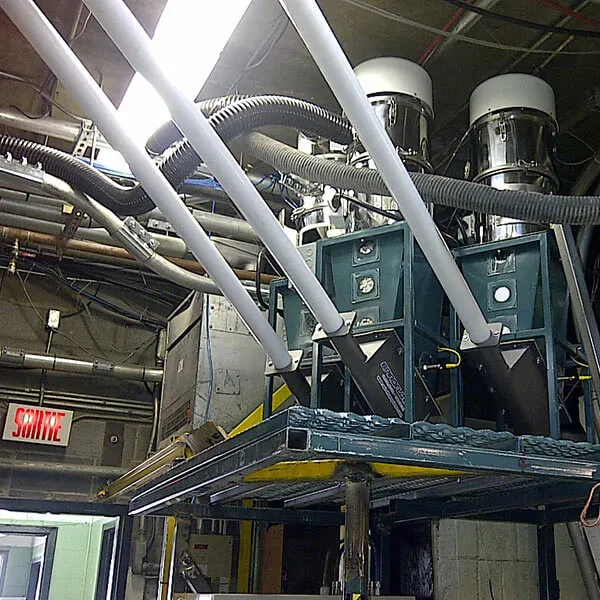
What Conveying Capacity Do You Require?
Flexible screw conveyors are offered in different diameters depending on the capacity you require. As a general rule, the largest Spiroflow screw conveyor can achieve capacities of up to 29 ft3/min (0.82 m3/min).
Higher-capacity conveyors might demand more frequent inspections and lubrication, as well as potentially quicker wear and tear on components. By accurately assessing your material handling needs and specifying the appropriate conveyor capacity from the outset, you can better plan and budget for maintenance, ensuring the longevity and cost-effectiveness of your flexible screw conveyor system.
What Is Your Required Conveying Distance?
Understanding your required conveying distance is crucial, no matter if you’re figuring out the cost of flexible screws or conventional conveyor belt solutions. However, the former can be up to 40 ft long (12m), and multiple conveyors can be “daisy chained” to achieve longer distances.
Longer conveying distances may necessitate more frequent maintenance to ensure optimal performance and reliability of components. Tailor your maintenance schedule and costs to suit your specific operational needs, ultimately enhancing the longevity and cost-effectiveness of your conveying system.
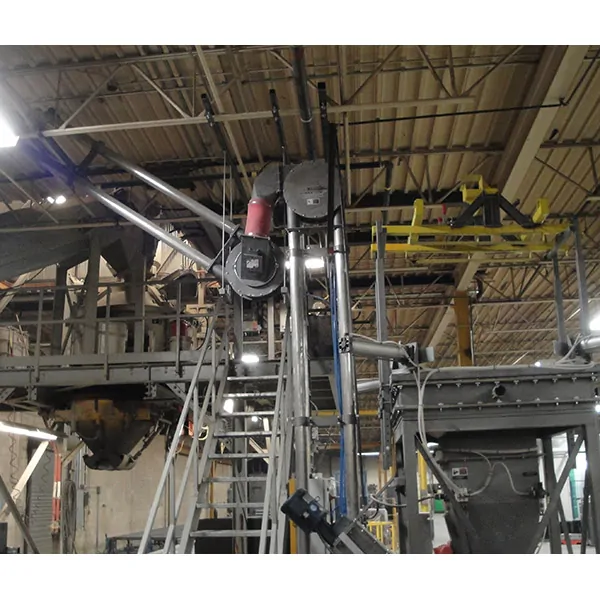
What Type of Spiral Will Most Effectively Convey Your Material?
In the realm of material handling and conveyor belt systems, selecting the right type of spiral for your specific application is important to ensure efficient and reliable transportation. No matter whether you call it a spiral or a screw, the type you need depends on the material you wish to convey.
Round Spirals
The standard round spiral works for most applications. This style of screw forces solids outward, which reduces friction and lowers load.
Flat Spirals
Flat spirals are recommended for light, aerated, or very fine products. The flat spiral directs more force in the direction of flow and increases capacity slightly.
Beveled Spirals
Beveled spirals work well with difficult materials like iron oxide, chocolate, pigments, or any smearing or cohesive products. This setup is semi-rigid, and bends are not recommended, but up to 45˚ conveying angles are possible.
Heavy-duty and Double Spirals
Heavy-duty spirals are also available for certain high-density or aggressive materials. We sometimes recommend a double spiral for high-density products.
Polished Spirals
Polished spirals are always available for hygienic food applications.
Center Cores
A spiral may sometimes not be enough. You might need a center core. This is a solid plastic rod that sits inside the spiral. It keeps material from falling back through the middle when working with light and material that fluidizes easily. It’s also an option for conveyors that end up inclined more than 60˚.
What Type of Conveying Tube Is Best?
Unlike a traditional belt conveyor system, flexible screw conveying requires you to choose a tube that is the best possible option for your manufacturing process. This is due to the fact that your material and application requirements will determine the best materials for the construction of the tube. There are plenty of choices:
- Food Grade Ultra High Molecular Weight Polyethylene (UHMWPE) tubes work for the majority of applications,
- Tubes made from antistatic polymers are an option for volatile environments,
- Abrasion-resistant rubber is the best option if you are working with minerals or abrasive materials,
- Tubes can also be made from carbon steel or 304/316 stainless steel. Steel tubes are needed for products that are abrasive and have high temperatures.
What Are Your Layout Requirements?
Determining your layout requirements is a crucial step when designing and implementing a conveyor belt system. The layout of your conveyor system directly impacts efficiency, material flow, and operational effectiveness. Several key considerations should guide your layout decisions:
- Space availability – Assess the available space in your facility to determine how the conveyor system can be best integrated. This includes considerations for the conveyor’s length, width, and height, as well as any spatial constraints or obstructions.
- Material flow – Analyze the flow of materials within your operation. Ensure that the conveyor layout facilitates a smooth and logical material flow from the point of entry to the point of exit or processing.
- Process integration – Integrate the conveyor system seamlessly into your existing production or material handling processes. Ensure that it complements and enhances overall workflow efficiency.
- Safety – Prioritize safety by designing a layout that minimizes potential hazards, such as pinch points or areas where employees interact with the conveyor. Adequate safety measures, like guardrails and emergency stops, should be integrated.
- Maintenance access – Consider accessibility for maintenance and repairs. Ensure that technicians can easily access conveyor components and perform routine upkeep tasks.
- Future expansion – Plan for scalability. Anticipate future needs and growth, allowing for adjustments or expansions to the conveyor system as your operation evolves.
- Environmental factors – Account for environmental conditions, such as temperature, humidity, and dust levels, which may affect the conveyor system’s performance and longevity.
- Product characteristics – Take into account the size, weight, and characteristics of the products or materials being conveyed. Ensure that the conveyor layout is suitable for handling these items effectively.
What Components Will You Need?
An electric motor for your screw conveyor can be designed to deliver as much voltage as you need. Experienced conveyor manufacturers can determine the proper motor for you. Depending on your specifications, spiral speed can be fixed or variable.
Level probes are an option as well. They identify high and low solid levels in the hopper feeding the screw or the hopper the screw is delivering material. Optional interlocked, quick-release connectors enhance rapid dismantling and reassembly for cleaning.
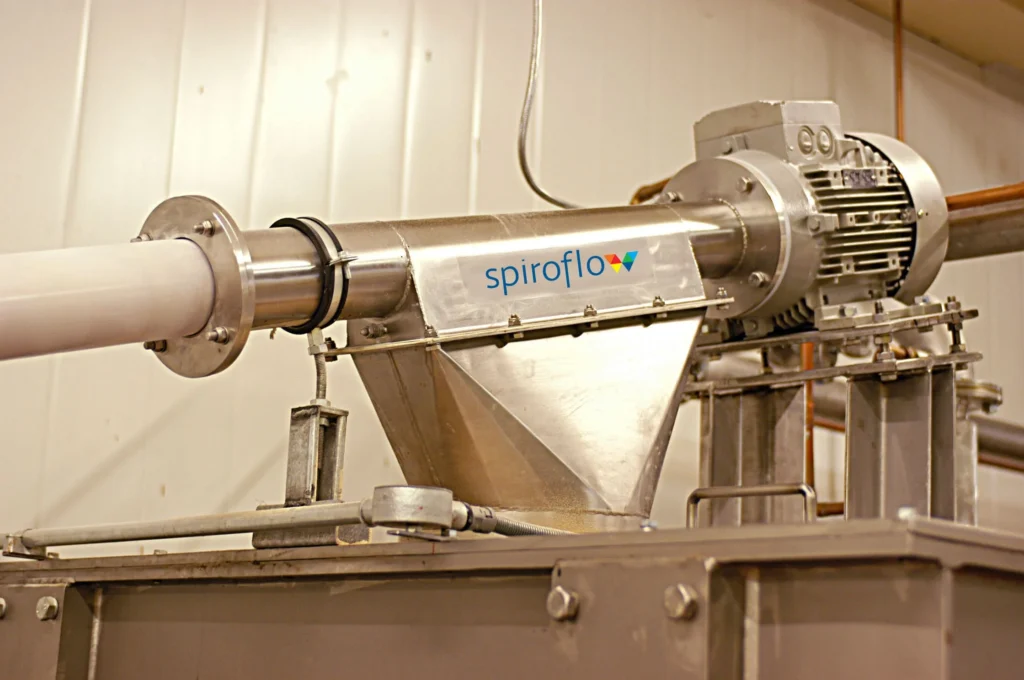
Other Options Worth Considering
Exploring alternative options is often a wise approach when seeking the most effective solution for specific challenges or requirements. In the realm of material handling, there is a diverse array of innovative technologies and methods beyond conventional industrial conveyor systems. Here are some of the options to consider:
- Access panels,
- Integral bag dump/sack dump stations,
- Feed hopper agitators,
- Mobile base,
- Control panel or purged control panel
- Drive motor wash down
- Sanitary seal standoff,
- Quick-release tube connections,
- USDA/3A design,
- Right angle gear reducer,
- Flexible discharge hose,
- Static grounding,
- Explosion-proof motor,
- NEMA 4 or 7/ATEX compliance.
Get the Best Price From One of the Top-Notch Conveyor Systems Manufacturers
In your quest to optimize your material handling solutions, securing the best value from a renowned conveyor systems manufacturer is paramount. By entrusting your needs to industry leaders, you gain access to cutting-edge technology, superior craftsmanship, and unparalleled expertise. At Spiroflow, we pride ourselves on being at the forefront of conveyor system innovation, offering tailored solutions to meet your specific requirements.
For more than 45 years, Spiroflow has been building flexible screw conveyors around the world. In fact, it is the product that launched the company! These conveyors are dust-free, easy to clean, hygienic, gentle, and maintain mixtures. Contact us, and let’s discuss how Spiroflow can elevate your material handling processes.

